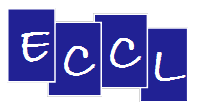Scientific ProgrammeThe scientific programme of the Action may be pursued through three main topics. The scientific plan for the three main topics, each being designated a Working Group (WG, see Section E), is as follows: Topic 1.Study and control of selective bond cleavage by electron induced dissociation: This Action plans to establish a coordinated research programme focused on the study of the efficiency and bond selectivity of DEA with isolated molecules (i.e. in the gaseous phase). The influence of the coupling of these molecules to their environment either in clusters, in the condensed phase or adsorbed on surfaces will be studied. The main aim will be to identify suitable molecular targets for use in ECCL. These candidates should show high selectivity and high efficiency with regards to bond rupture induced by DEA, and should maintain that selectivity and efficiency when coupled to an environment in clusters, condensed phase or adsorbed on surfaces. Topic 1 of the Action will focus on:
These studies will provide necessary data for the programmes listed under topic 2 and 3 of this Action. Topic 2. Chemical control by electron induced molecular fragmentation: In this topic of the Action, intermolecular reactions leading to controlled coupling of a reactive fragment to another molecule, by identifying the products of electron-induced reactions in mixed clusters and molecular films, are studied. Similarly, the Action will promote the study of the attachment of functional groups to surfaces of materials such as semiconductors or molecular selfassembled mono-layers, and to explore the potential of these reactions for ECCL. Such experimental studies must be complemented by the application of fully ab-initio models to describe the structure of the molecule/surface junction from an atomistic point of view and to predict which of different possible intermolecular reactions are energetically the most likely for a given system. Furthermore, the calculation of the energy landscape and the evaluation of adsorption bond strengths of single molecules on surfaces, or the modification of bond strengths within such adsorbed molecules, may provide a profound insight into fundamental mechanisms of single molecule manipulation on surfaces. Topic 2 of the Action will focus on:
Topic 3. Chemical control using scanning tunnelling microscope: New capabilities of atomic-scale imaging, analysis and manipulation are revolutionizing scientific approaches in both material and life sciences. In particular, STM has deepened our understanding of material surfaces by providing us, for the first time, with atomic resolution spatial images. For many years, STMs lacked chemical specificity, requiring complementary spectroscopic tools to identify the chemical species being imaged. However, recently STM–IETS (STM inelastic electron tunnelling spectroscopy) has been developed to measure the vibrational spectrum of a single molecule, allowing STM to be used as a tool for chemical analysis of single molecules. The ability to fashion structures and control chemical processes at the fundamental level using electronic excitations has been made possible by combining STM with an understanding of the dynamics of electron-molecule interactions. Electronic induced cleavage of selected bonds of the adsorbed molecule by using inelastic tunnelling of electrons from the STM tip appears to be the most appropriate method for controlling, with precision, molecular reactions at a single site on a surface. The aim of this topic of the Action is to significantly advance our understanding of inelastic tunnelling of electrons from the STM tip for producing different kinds of elementary electron induced molecular reactions, (e.g. dissociation, desorption, change of conformation and diffusion). These include the population of negative ion resonances or the electronic transitions between occupied and unoccupied electronic states of the molecules adsorbed on the surface. Since it is often difficult to distinguish between these various effects and to clearly identify the ionic resonances and electronic states involved solely from STM experiments, collaboration with research pursued in each of the first topics is vital. Topic 3 of the Action will focus on:
For the success of this Action, dynamic synergy between the individual sub-tasks of the Action’s scientific programme is essential. Furthermore, it should be noted that this scientific programme is open to refinement as new areas of research are identified since a quick response to new knowledge and technical developments is essential in achieving the major objective of ECCL. |
Last updated: 28th September 2007


